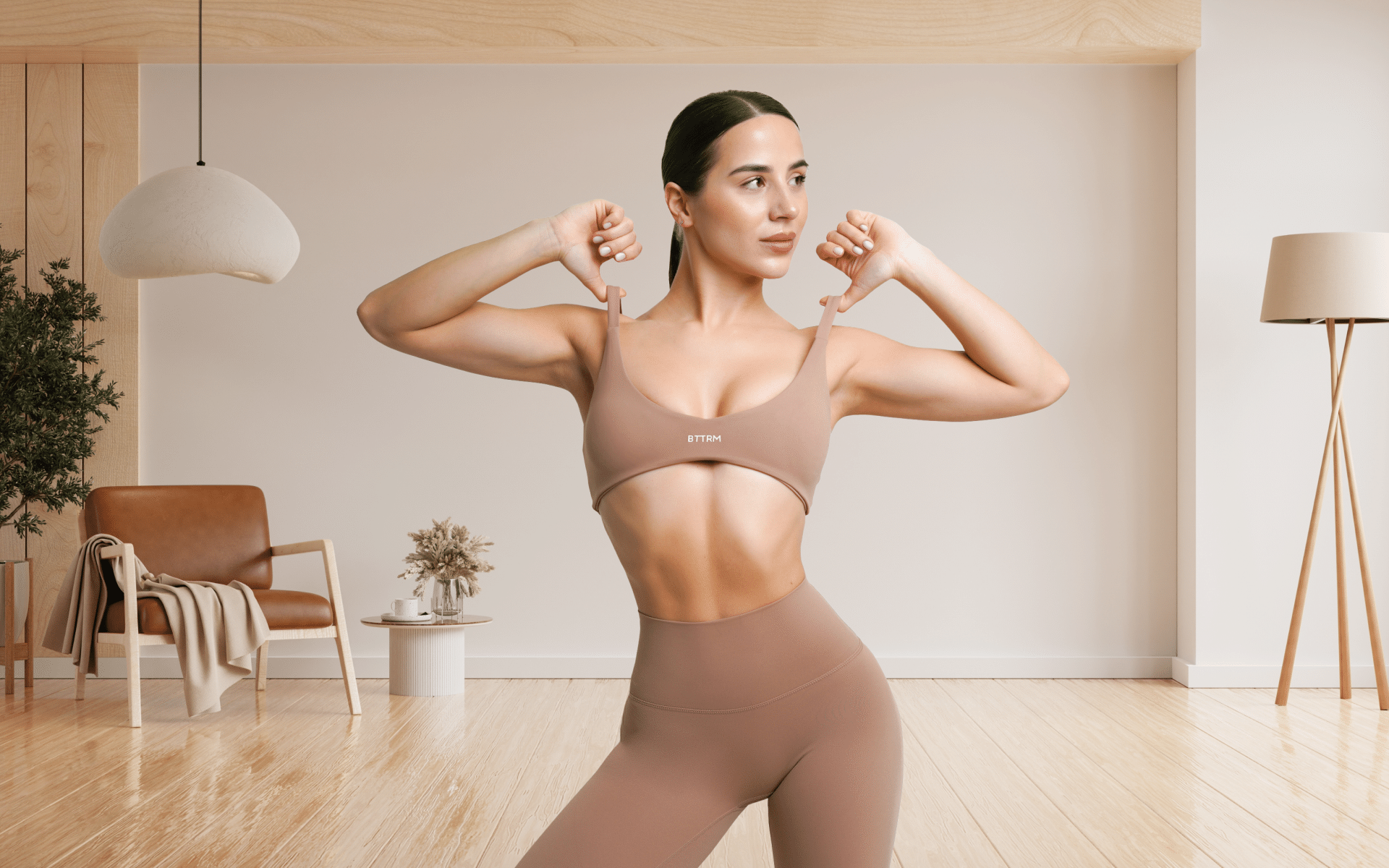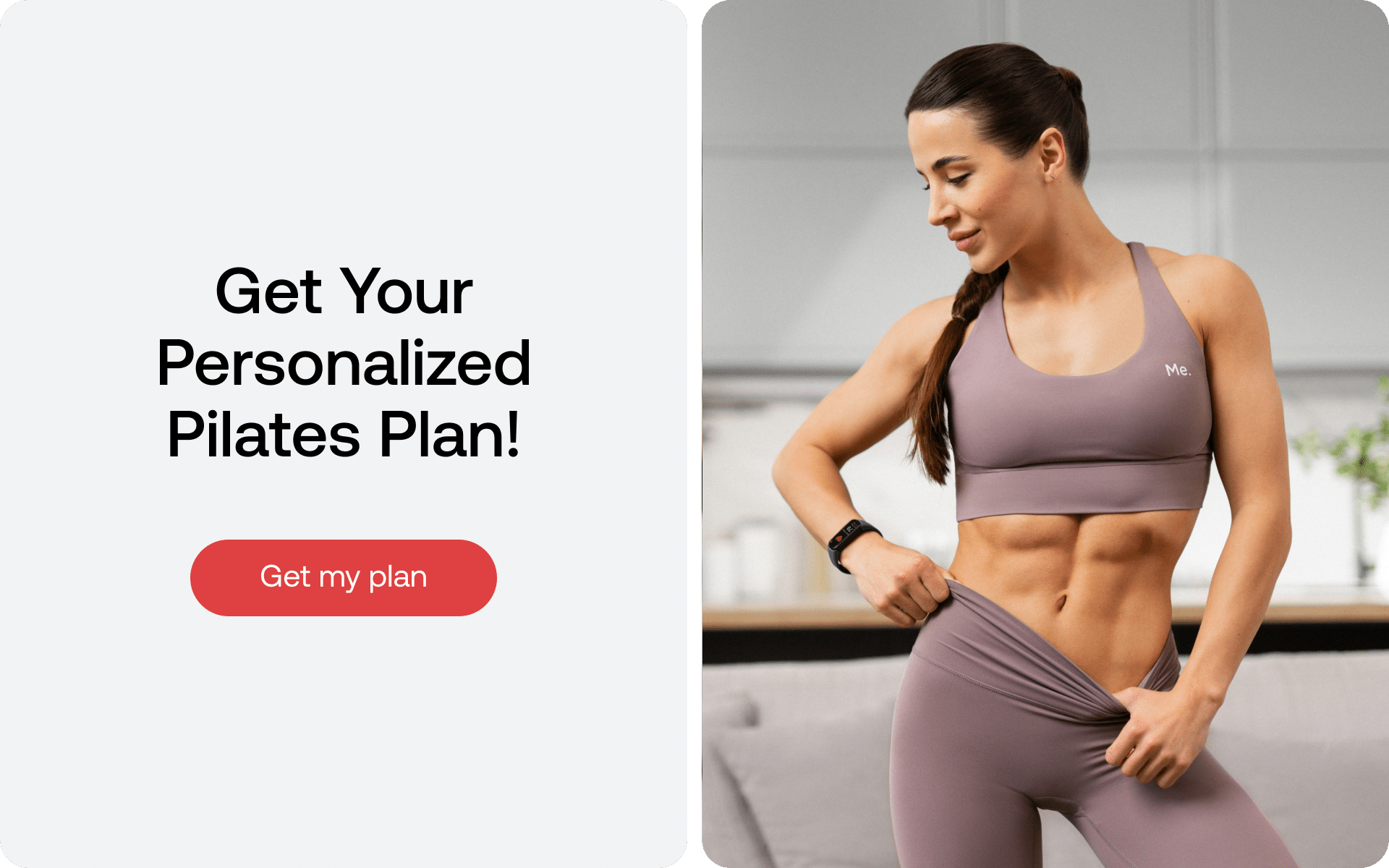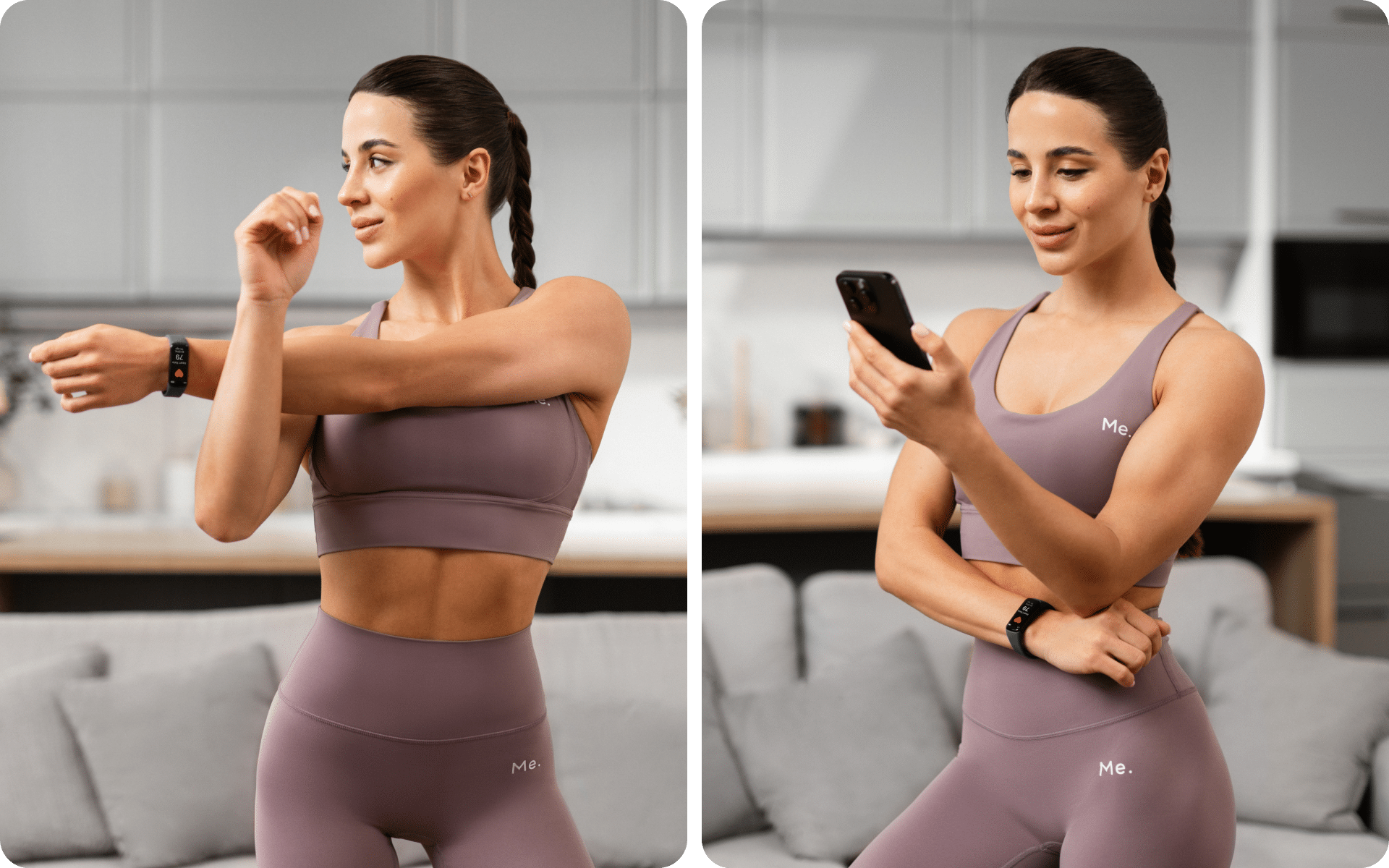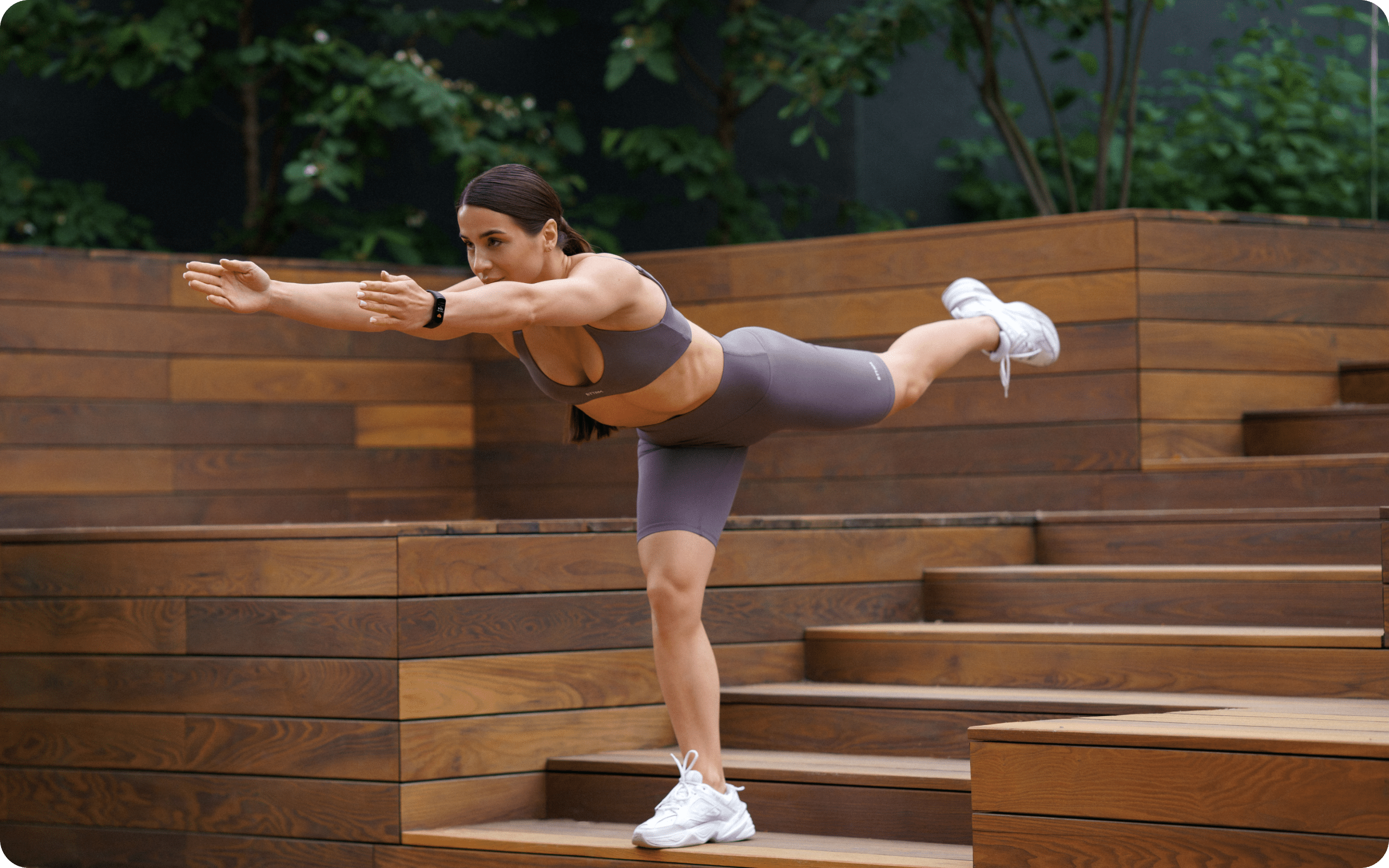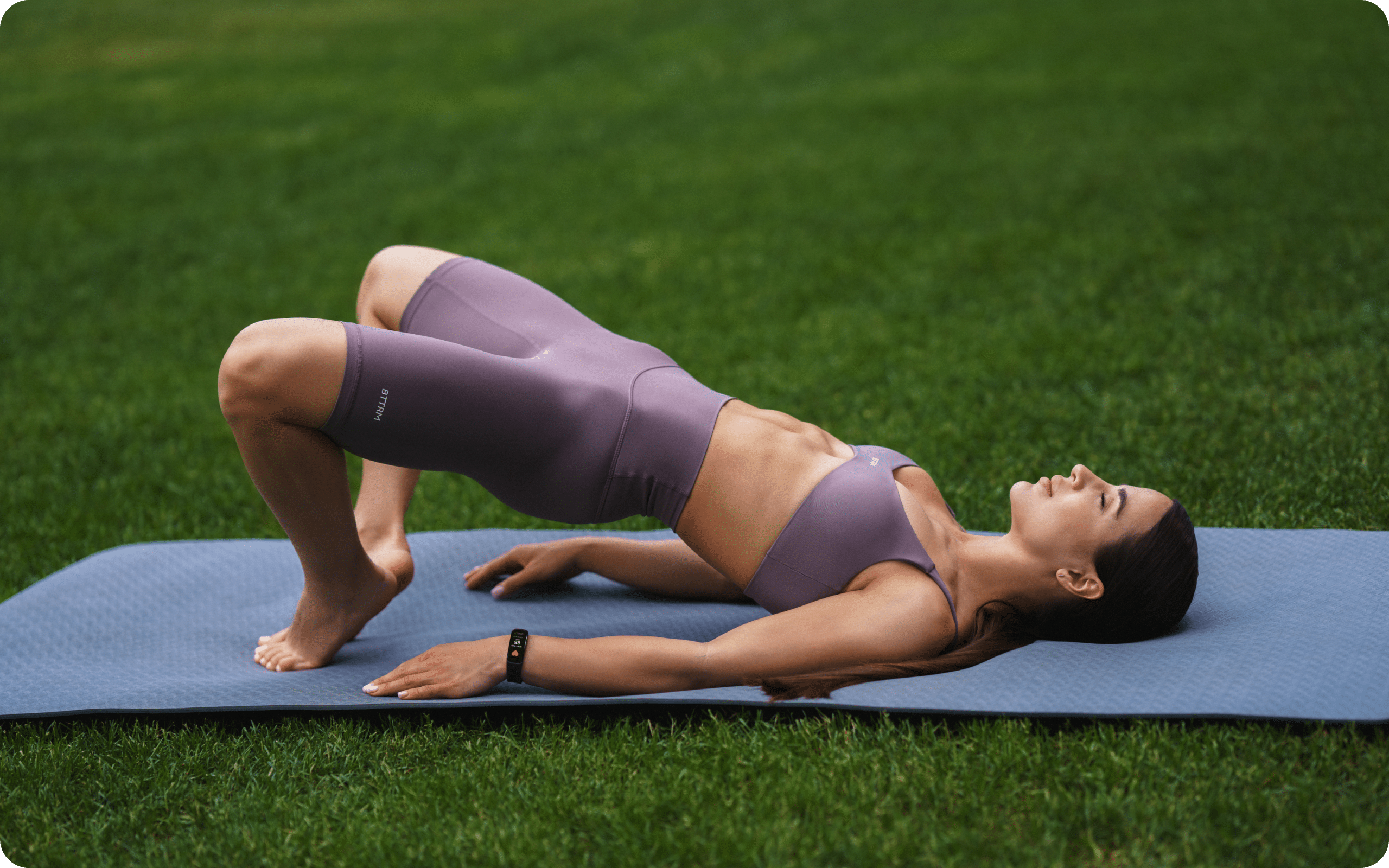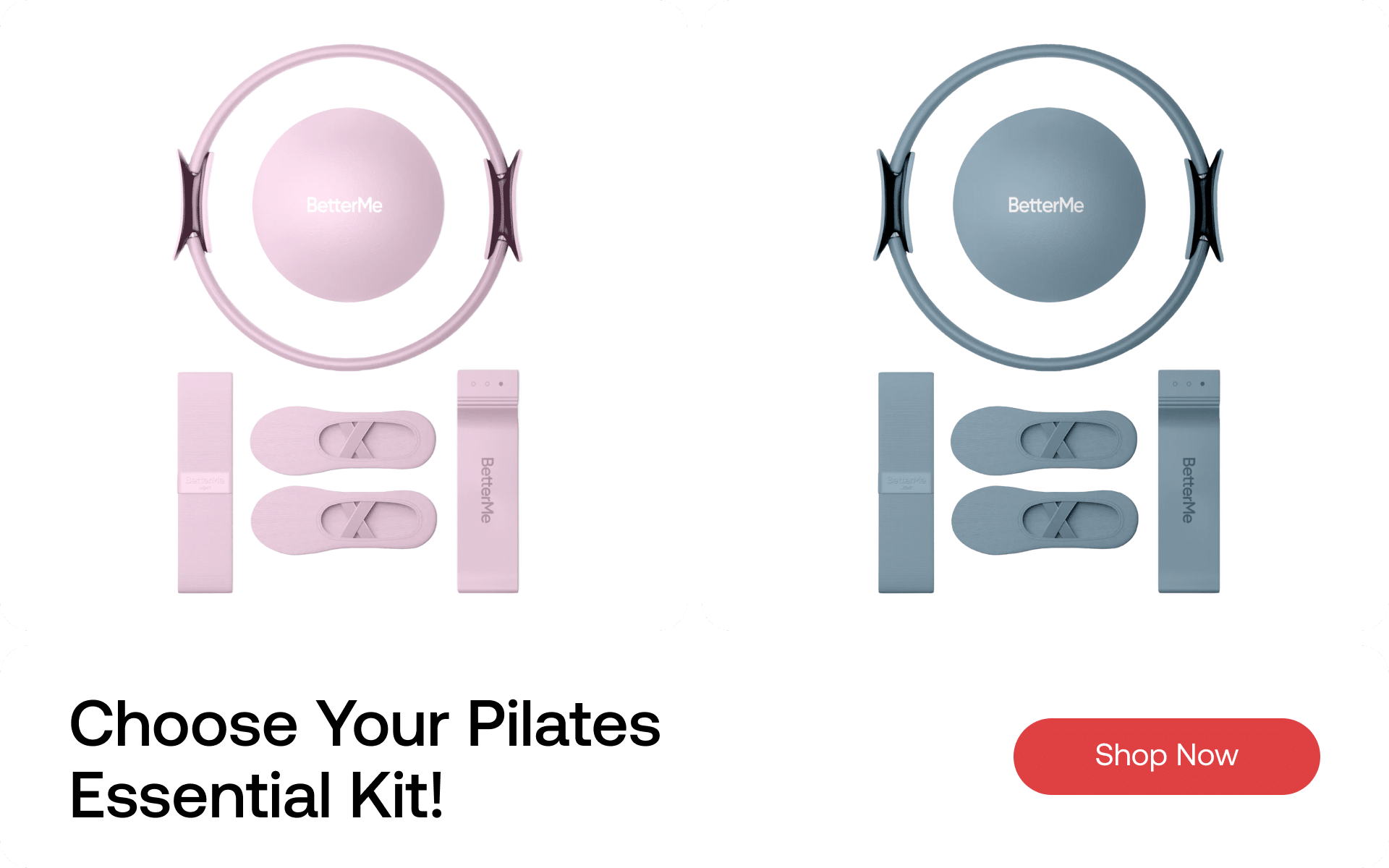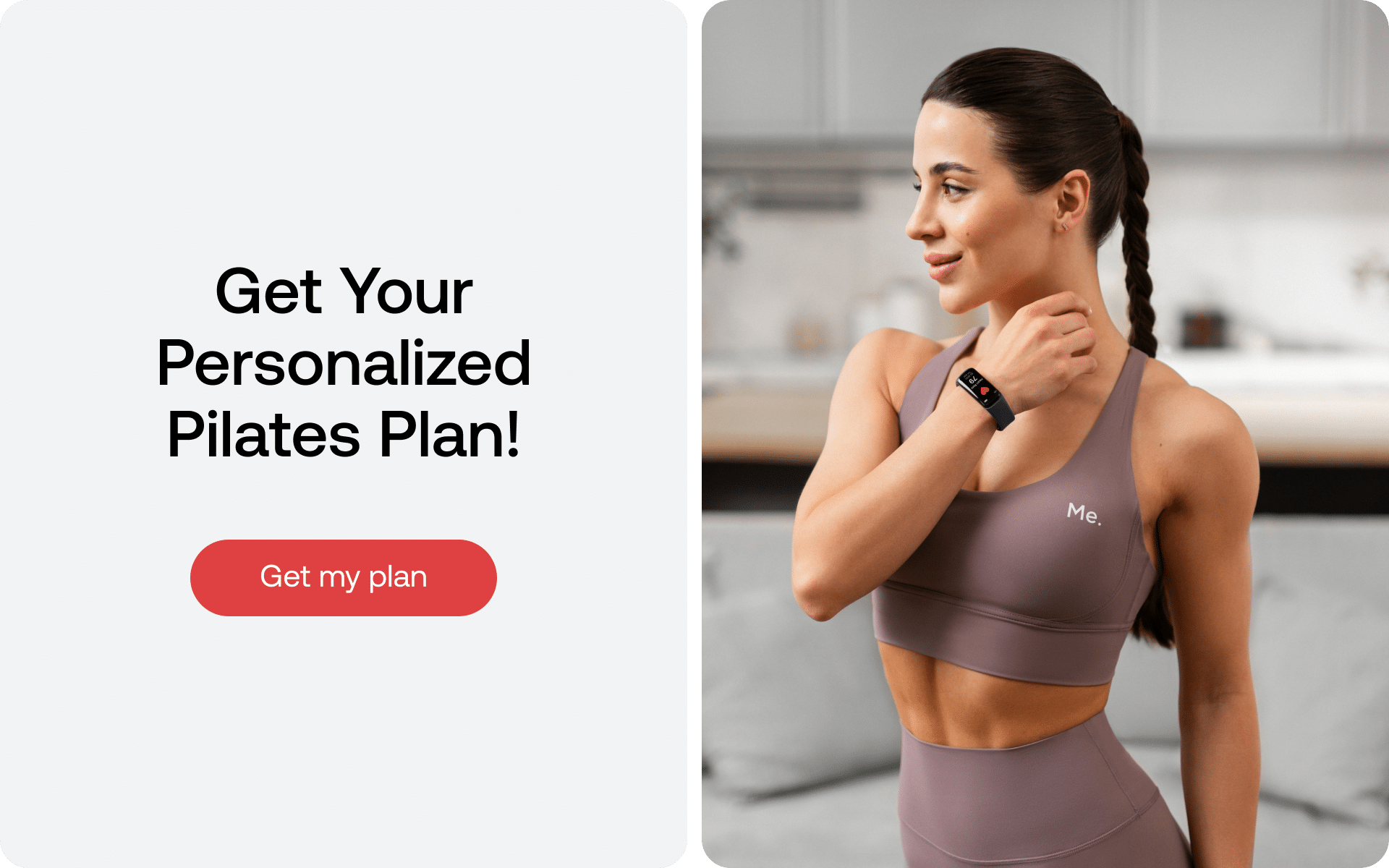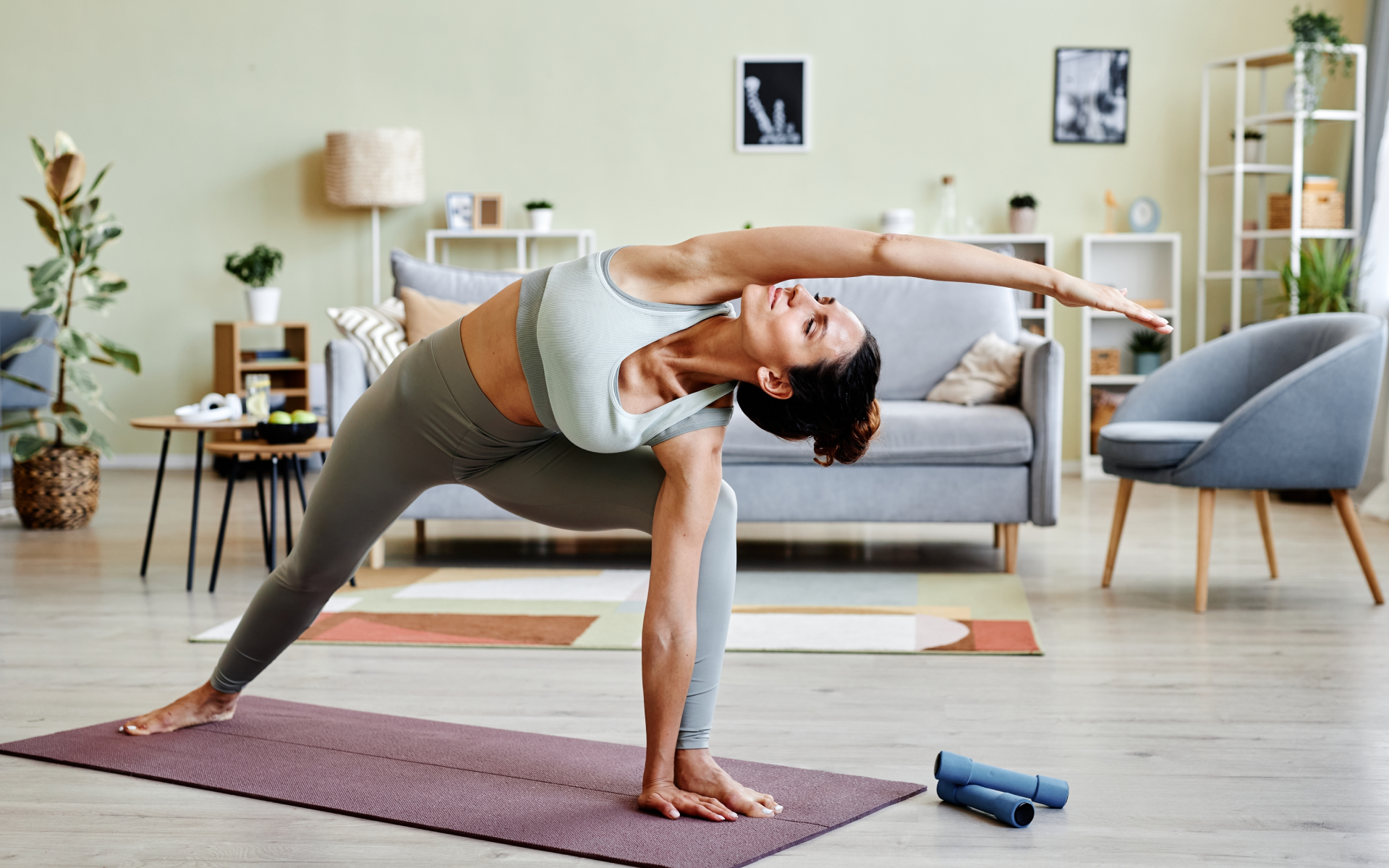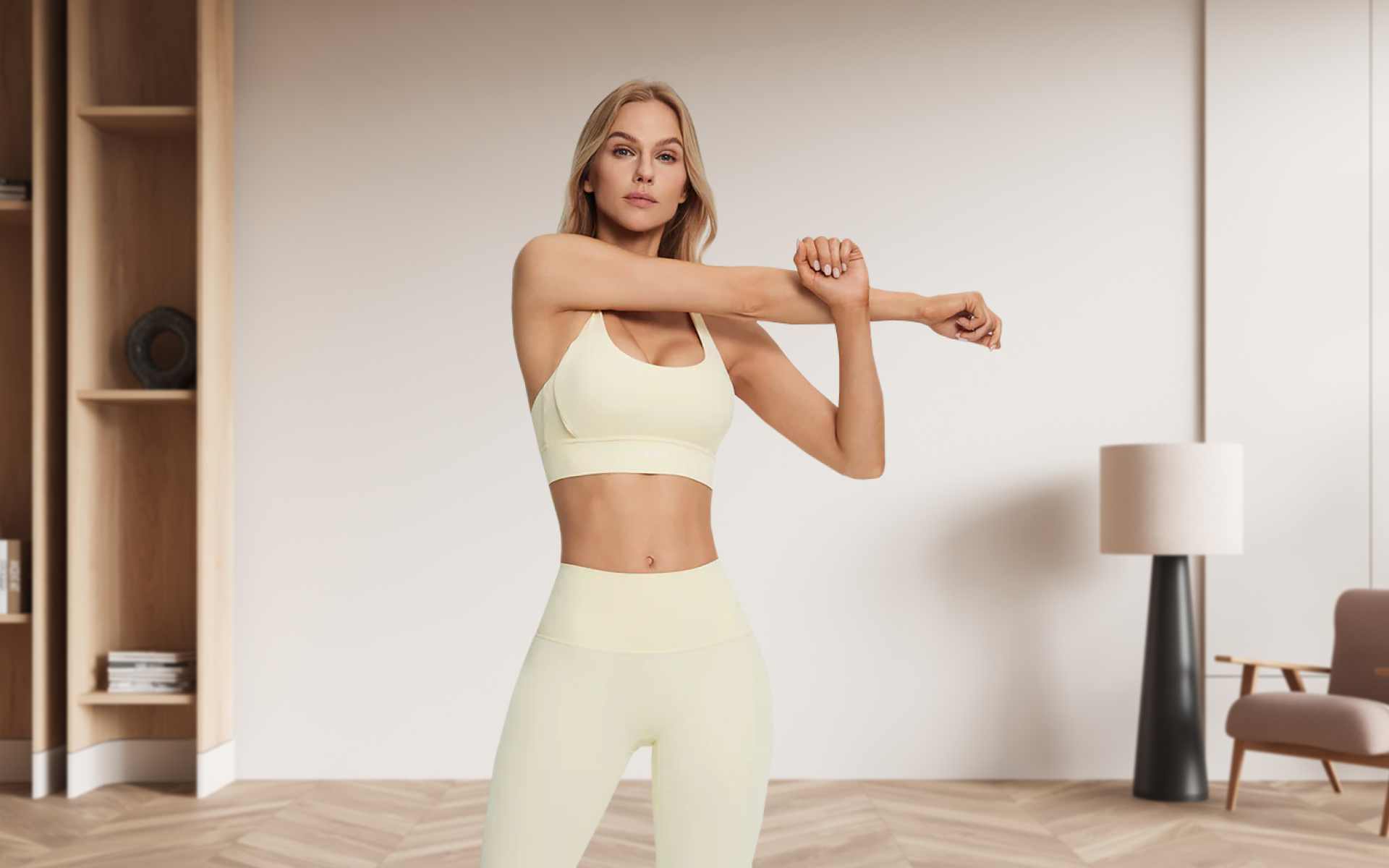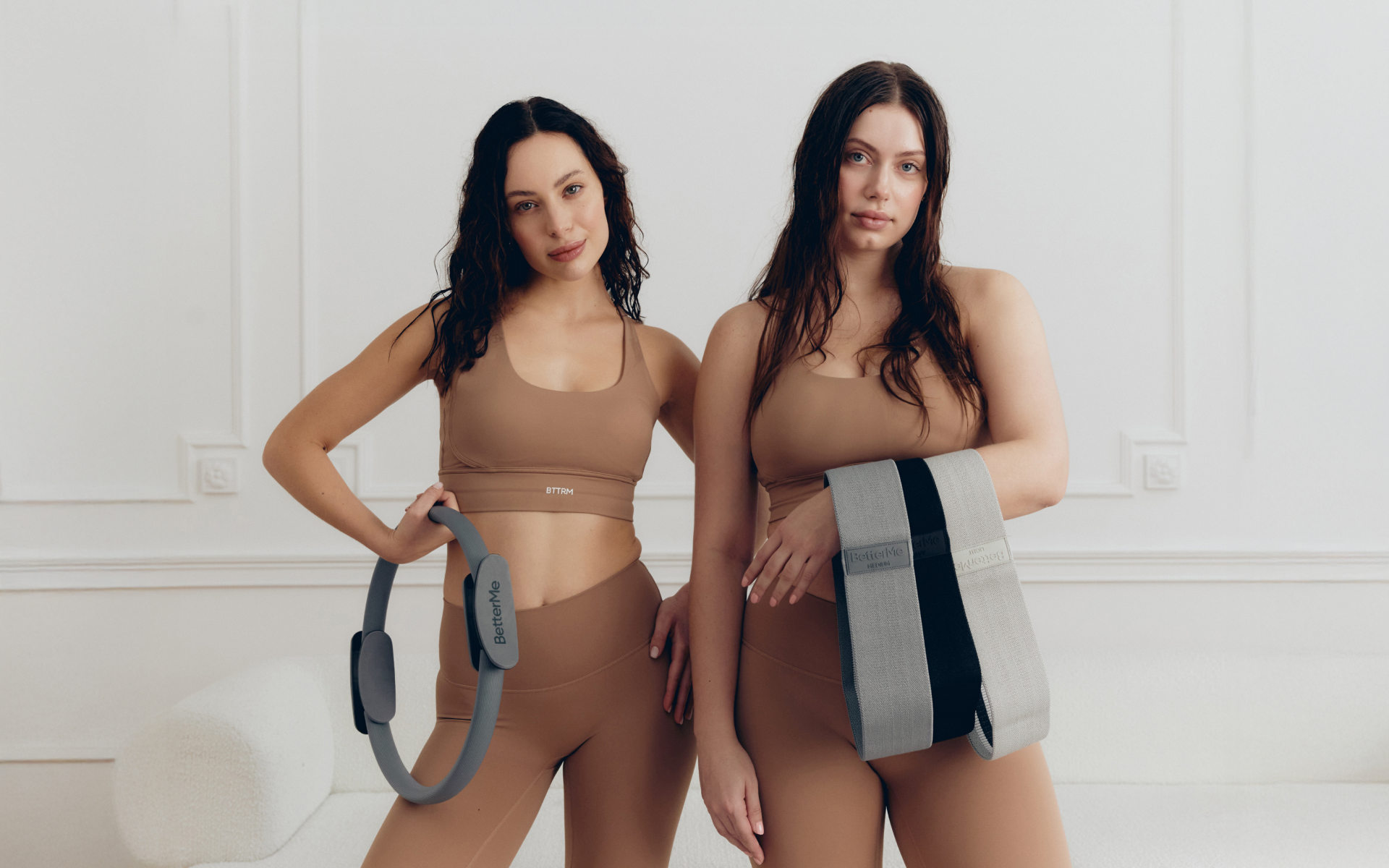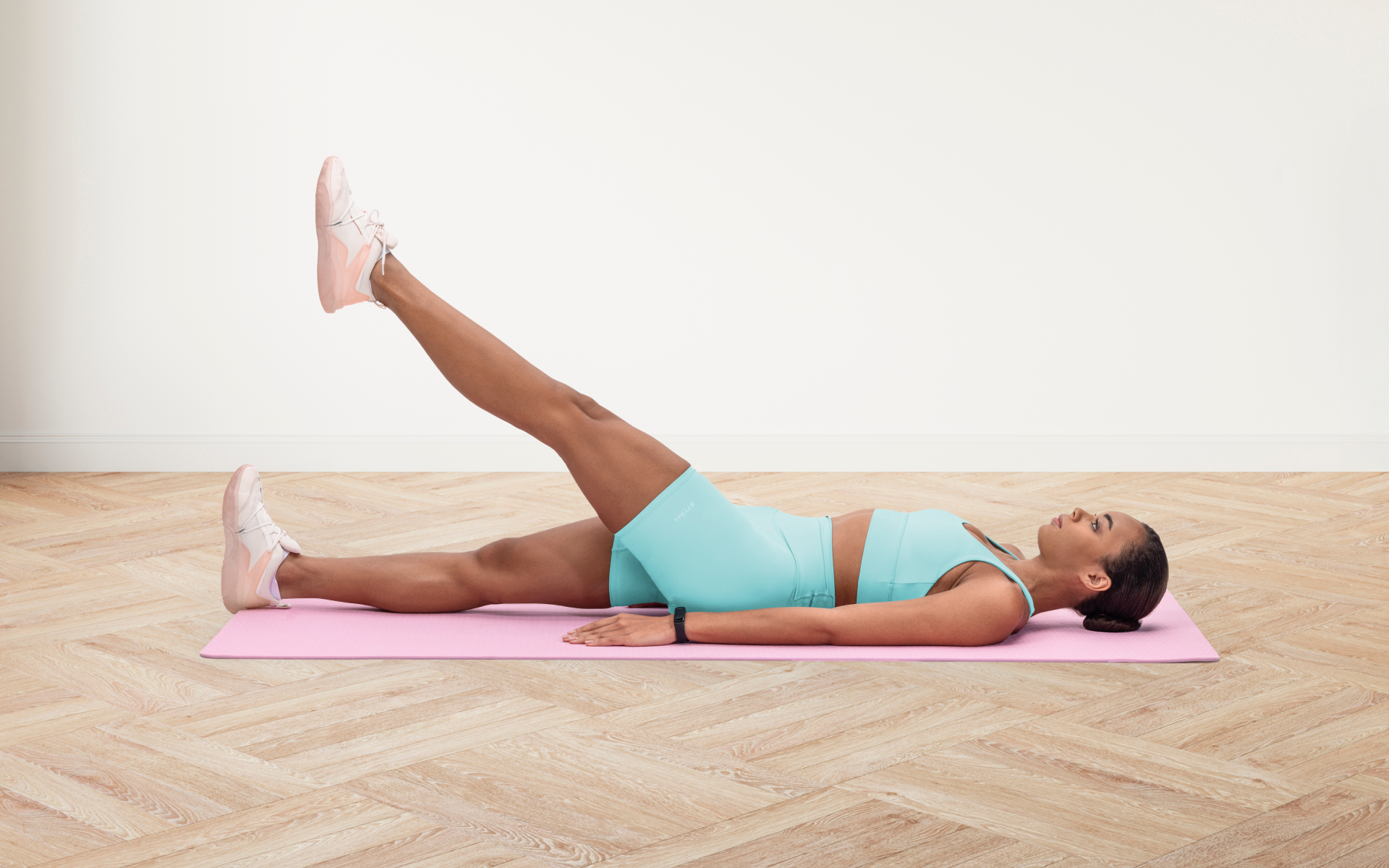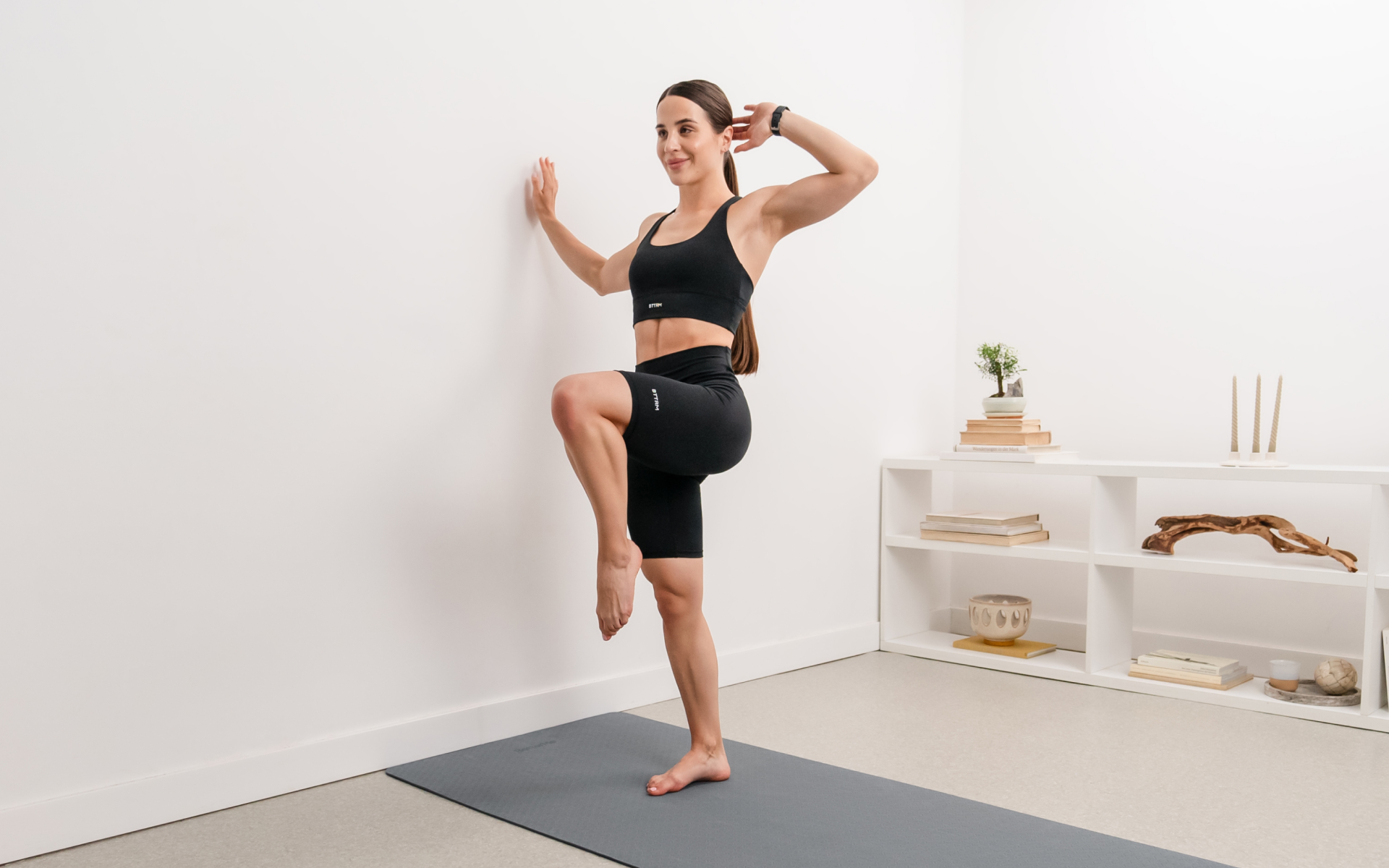We all have stubborn body areas that seem to resist all efforts to tone and strengthen. For many people, the arms are one of those areas. Flabby arms can make us feel self-conscious and affect our overall confidence.
Losing weight can help to reduce the appearance of flabby arms, but it may not necessarily tone and strengthen them. According to experts, one of the most effective ways to tone flabby arms is through strength training exercises (1), and Pilates for arms is a great option for this.
Pilates isn’t your typical bench-pressing, bicep-curling workout. It focuses on slow, controlled movements that engage multiple muscle groups at once. With each stretch, twist, and squeeze, you’ll build lean muscle and improve your overall strength (2).
If you’re ready to say goodbye to those flabby arms, here are 12 Pilates exercises that will help you achieve toned and strong arms.
Will Pilates Get Rid of Flabby Arms?
Flabby arms result from rapid weight loss, lack of physical activity, genetics, and aging, which makes our skin less elastic.
While Pilates may not be able to entirely get rid of flabby arms on its own, it can significantly improve their appearance by toning and strengthening the muscles in your arms. Along with a healthy diet and regular cardiovascular exercise, incorporating Pilates into your workout routine can lead to toned and sculpted arms.
How Can Pilates Tone Your Arms?
Pilates tones your arms in the way it targets and activates the muscles in your arms, particularly the biceps, triceps, and shoulders. The slow and controlled movements in Pilates for arms also help to improve muscle endurance, which is essential for toning and strengthening.
Through regular practice of Pilates, you can potentially develop better posture and alignment, which translates to better performance in other physical activities (3).
You can perform a Pilates arm workout with weights, or not. Either way, these Pilates arm exercises are a great place to start:
- Spine Stretch Forward
- Open Leg Rocker
- Swan Dive
- Leg Pull Front
- Leg Pulls (Prone and Supine)
- Boomerang
- Seal
- Crab
- Push-Up Series (with variations)
Pilates For Arms: Spine Stretch Forward
The Spine Stretch Forward exercise primarily engages the deltoids, triceps, and biceps. This Pilates move focuses not only on stretching the spine but also on activating and toning the arm muscles as you reach forward and extend your arms in front of you.
Steps:
- Sit upright on your mat with your legs extended straight and slightly wider than your hips.
- Flex your feet and lengthen your spine, reaching the top of your head towards the ceiling.
- Extend your arms out in front of you at shoulder height, keeping them parallel to the floor.
- Inhale deeply, and as you exhale, hinge at the hips to fold your torso forward, reaching towards your toes.
- Keep your arms stretched out in front, gently engaging your shoulder blades down your back and maintaining your arms’ parallel alignment.
- Hold the stretch for a moment, then slowly roll up, stacking your spine one vertebrae at a time, returning to the starting position.
Whether you’re a workout beast or just a beginner making your first foray into the world of fitness and dieting – BetterMe has a lot to offer to both newbies and experts! Install the app and experience the versatility first-hand!
Open Leg Rocker
The Open Leg Rocker is a dynamic exercise that works on the triceps, deltoids, and core stability. It requires you to balance on your sitting bones, thus activating your arm muscles to keep the movement controlled and steady.
Steps:
- Sit tall on your mat with your knees bent and feet flat.
- Grab hold of your ankles or the backs of your thighs.
- Lean back slightly to balance on your sitting bones and extend your legs upward into a V-position.
- Keep your arms straight and engaged, holding the position firmly.
- Inhale and rock back gently onto your shoulder blades.
- Exhale and use your core and arms to rock back up, maintaining the V-position.
- Repeat the motion, ensuring your arms stay strong and stable throughout the exercise.
Read More: Is Pilates Good for Toning? Here’s What You Should Know
Swan Dive
Swan Dive engages the triceps, biceps, and shoulders, while also promoting overall back strength and flexibility. The movement requires the arms to lift the upper body off the ground and control the descent, making it an excellent upper-body exercise.
Steps:
- Lie on your stomach with your legs extended straight and your arms bent, hands placed under your shoulders.
- Inhale, press into your hands. Lift your chest and upper body off the mat into a slight backbend.
- Exhale, engage your arms and core, and allow your body to rock forward, lifting your legs off the mat as your arms extend.
- Inhale as you rock back, lifting your chest and lowering your legs.
- Continue the rocking motion, maintaining a strong engagement in your arms and controlling the movement with your breath.
- After several repetitions, lower your body gently back to the mat and relax.
Leg Pull Front
The Leg Pull Front exercise intends to strengthen the triceps, biceps, and shoulders while also working on core stability and overall body balance. This plank variation requires strong arms to support your body weight and control leg lifts.
Steps:
- Begin in a plank position with your hands directly under your shoulders and your body forming a straight line from head to heels.
- Engage your core and maintain a neutral spine position.
- Shift your weight slightly to your right arm and lift your left leg off the mat, keeping it straight.
- Hold for a moment, then lower your left leg back to the mat.
- Shift your weight to your left arm and lift your right leg off the mat, keeping it straight.
- Hold for a moment, then lower your right leg back to the mat.
- Continue alternating legs, ensuring your arms remain strong and engaged throughout the exercise.
- Perform the movements with control and precision, avoiding any swaying or shifting of your hips.
Leg Pulls (Prone and Supine)
Leg Pulls target the triceps, biceps, and deltoids by providing an intense upper body workout while requiring significant core engagement. The prone and supine variations challenge different muscle groups, ensuring a comprehensive arm workout.
Steps for Leg Pull Prone:
- Begin in a plank position with your hands directly under your shoulders and your body forming a straight line from head to heels.
- Engage your core and maintain a neutral spine.
- Shift your weight slightly to your right arm and lift your left leg off the mat, keeping it straight.
- Hold for a moment, then lower your left leg back to the mat.
- Shift your weight to your left arm and lift your right leg off the mat, keeping it straight.
- Hold for a moment, then lower your right leg back to the mat.
- Continue alternating legs, ensuring your arms remain strong and engaged throughout the exercise.
- Perform the movements with control and precision, avoiding any swaying or shifting of your hips.
Intense sweat sessions, working weight loss tips, lip-smacking recipes come in one package with the BetterMe app. And all of it is at your fingertips, start transforming your life now!
Steps for Leg Pull Supine:
- Sit on the mat with your legs extended straight and your hands placed slightly behind your hips, fingers pointing forward.
- Press into your hands, lift your hips off the mat, and come into a reverse plank position.
- Engage your core and maintain a straight line from head to heels.
- Shift your weight to your right arm and lift your left leg off the mat, pointing your toes.
- Hold briefly, then lower your left leg back to the mat.
- Shift your weight to your left arm and lift your right leg off the mat, pointing your toes.
- Hold briefly, then lower your right leg back to the mat.
- Continue alternating legs, ensuring your arms remain strong and engaged throughout the exercise.
- Keep your movements controlled and steady.
Boomerang
The Boomerang exercise combines coordination and control, significantly engaging the triceps, biceps, and deltoids. It requires fluid movements and strong arm engagement to maintain proper form and stability throughout the exercise.
Steps:
- Sit tall on your mat with your legs extended straight and crossed at the ankles.
- Extend your arms in front of you at shoulder height, palms down.
- Inhale and roll back onto your spine, lifting your legs overhead.
- Exhale and sweep your arms back as you roll forward, reaching for your toes.
- Engage your arms to maintain stability and control.
- Inhale and lift your torso up, reaching your arms overhead.
- Exhale and return to the starting position.
- Repeat, ensuring fluid and controlled movements throughout the exercise.
Seal
The Seal exercise is a powerful movement that targets the triceps, biceps, and deltoids by requiring dynamic arm engagement to both support the body’s weight and produce rhythmic, controlled movements. This exercise also combines core strength and stability, providing a comprehensive workout.
Steps:
- Sit on the mat with your knees bent and your feet flat on the floor.
- Place your hands under your ankles with palms facing out.
- Lean back slightly to balance on your sitting bones, lifting your feet off the mat.
- Clap your heels together three times while maintaining a strong engagement in your arms.
- Roll back onto your spine, keeping your arms engaged to control the movement.
- Clap your heels together three times at the top of the roll.
- Roll back up to the starting position and clap your heels together three times.
- Repeat, ensuring controlled and rhythmic movements throughout the exercise.
Crab
The Crab exercise is designed to enhance the strength and endurance of the triceps, biceps, and deltoids. This movement requires significant arm engagement to support the body’s weight while moving in different directions, making it an excellent choice for an upper body workout.
Steps:
- Sit on the mat with your knees bent and your feet flat on the floor.
- Place your hands on the mat behind you, fingers pointing towards your hips.
- Lift your hips off the mat, coming into a reverse tabletop position.
- Inhale and lift your right foot off the floor, reaching towards it with your left hand.
- Exhale and return to the starting position.
- Inhale and lift your left foot off the floor, reaching towards it with your right hand.
- Exhale and return to the starting position.
- Repeat, alternating sides and ensuring strong arm engagement throughout the exercise.
Push-Up Series
The Push-Up Series is a classic and highly effective way to build strength in the chest, triceps, biceps, and deltoids. This series can be modified to cater to different fitness levels, offering a versatile workout that significantly engages the arms while enhancing overall upper body strength.
Steps for Standard Push-Ups:
- Begin in a plank position with your hands placed slightly wider than shoulder-width apart.
- Engage your core and maintain a straight line from head to heels.
- Inhale and bend your elbows to lower your chest towards the mat.
- Exhale and push through your hands to return to the starting position.
- Repeat for the desired number of repetitions, ensuring controlled and steady movements.
Steps for Tricep Push-Ups:
- Begin in a plank position with your hands directly under your shoulders.
- Engage your core and maintain a straight line from head to heels.
- Inhale and bend your elbows, keeping them close to your body, to lower your chest towards the mat.
- Exhale and push through your hands to return to the starting position.
- Repeat for the desired number of repetitions, ensuring controlled and steady movements.
Steps for Wide Grip Push-Ups:
- Begin in a plank position with your hands placed wider than shoulder-width apart.
- Engage your core and maintain a straight line from head to heels.
- Inhale and bend your elbows to lower your chest towards the mat.
- Exhale and push through your hands to return to the starting position.
- Repeat for the desired number of repetitions, ensuring controlled and steady movements.
Steps for Diamond Push-Ups:
- Begin in a plank position with your hands under your chest, forming a diamond shape with your fingers.
- Engage your core and maintain a straight line from head to heels.
- Inhale and bend your elbows to lower your chest towards your hands.
- Exhale and push through your hands to return to the starting position.
- Repeat for the desired number of repetitions, ensuring controlled and steady movements.
Read More: 10 Benefits of Exercise on the Brain
Is Pilates Good for Bad Shoulders?
Anyone experiencing shoulder pain or discomfort may benefit from incorporating Pilates exercises into their fitness routine. Pilates focuses on strengthening and stabilizing the muscles around the shoulder joint, which can help alleviate pain and improve mobility (3).
Additionally, Pilates promotes proper posture and alignment, which can help prevent future shoulder issues. It also targets the core muscles, which provide support for the shoulders during daily activities (3).
However, it is essential to consult with a healthcare professional before starting any new exercise program, especially if you have existing shoulder injuries or conditions. A certified Pilates instructor can also modify exercises to accommodate any limitations or injuries.
Does Pilates Make You Look Muscular?
Pilates can improve muscle tone and definition, but it is not a traditional strength training program. Pilates likely does not trigger significant muscle hypertrophy, which is the increase in muscle size (4). Instead, it focuses more on improving endurance and strength, which could ultimately make your muscles appear leaner and more toned rather than bulky.
Pilates exercises target smaller, stabilizing muscles in addition to larger muscle groups, which can create a more balanced and toned appearance. However, the extent to which your muscles will become defined depends on your body composition, level of intensity during workouts, and your overall nutritional intake.
FAQs
Is 20 Minutes of Pilates a Day Enough?
Yes, 20 minutes of Pilates a day can be sufficient, especially for beginners. Consistent daily practice can lead to improvements in muscle tone, flexibility, and overall well being (2f). The key is to stay consistent and focus on proper form while also engaging in a variety of exercises to fully benefit your body.
However, as you advance, you might find that longer sessions are necessary to continue making progress.
How Many Times a Week Should I Do Pilates to See Results?
To see noticeable results, it is generally recommended to perform Pilates exercises at least 3 to 4 times a week.
Consistency is crucial for building strength, increasing flexibility, and improving posture. Incorporating regular sessions into your weekly routine ensures that the body has enough time to adapt and strengthen, leading to better long-term results.
How Long Does It Take for Pilates to Tone Your Body?
The time it takes for Pilates to tone your body varies depending on several factors, including your current fitness level, workout consistency, and diet.
Generally, many people start noticing changes in muscle tone and posture within 4 to 6 weeks of regular practice, when performed 3 to 4 times a week. For more significant toning, it may take a few months of consistent practice.
Will Pilates Change My Body Shape?
Pilates can contribute to changes in your body shape by improving muscle tone, enhancing posture, and promoting overall strength and flexibility (5).
While it likely won’t drastically change your natural body type, regular practice can help you achieve a leaner and more toned appearance. The exercises target both large and small muscle groups, leading to a balanced and sculpted body over time.
The Bottom Line
Practicing Pilates can improve muscle tone in your arms. Accompanied with a balanced diet and regular exercise, Pilates can lead to many health benefits, including improved posture, increased strength and flexibility, and the potential for better overall wellbeing.
With its versatility and variations of exercises, it is suitable for a majority of people who are looking to tone their arms or even potentially those looking to alleviate shoulder pain. Remember to consult a professional before starting any new fitness routine and listen to your body’s needs during workouts.
DISCLAIMER:
This article is intended for general informational purposes only and does not serve to address individual circumstances. It is not a substitute for professional advice or help and should not be relied on for making any kind of decision-making. Any action taken as a direct or indirect result of the information in this article is entirely at your own risk and is your sole responsibility.
BetterMe, its content staff, and its medical advisors accept no responsibility for inaccuracies, errors, misstatements, inconsistencies, or omissions and specifically disclaim any liability, loss or risk, personal, professional or otherwise, which may be incurred as a consequence, directly or indirectly, of the use and/or application of any content.
You should always seek the advice of your physician or other qualified health provider with any questions you may have regarding a medical condition or your specific situation. Never disregard professional medical advice or delay seeking it because of BetterMe content. If you suspect or think you may have a medical emergency, call your doctor.
SOURCES:
- 9 of the Best Arm Sculpting Exercises to Tone & Strengthen (n.d., blog.nasm.org)
- Pilates (2011, ncbi.nlm.nih.gov)
- Pilates: how does it work and who needs it? (2011, ncbi.nlm.nih.gov)
- Maximizing Muscle Hypertrophy: A Systematic Review of Advanced Resistance Training Techniques and Methods (2019, ncbi.nlm.nih.gov)
- The effect of Pilates exercises on body composition: A systematic review (2012, researchgate.net)
